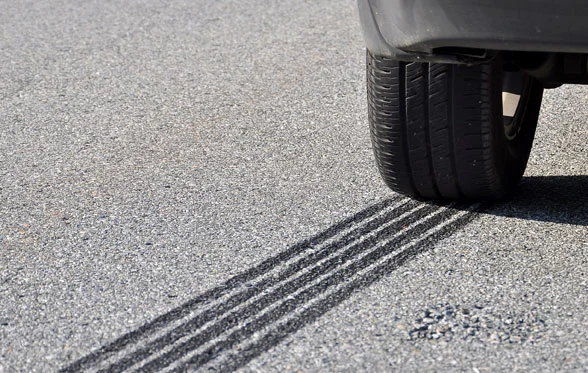The National Highway Traffic Safety Administration (NHTSA) is proposing to amend the regulation for Event Data Recorders (EDRs) to extend the recording period for timed data metrics from 5 seconds of pre-crash data at a frequency of 2Hz to 20s of pre-crash data at a frequency of 10Hz (i.e., increase from 2 samples per second to 10 samples per second). The Notice of Proposed Rulemaking (NPRM) appeared in the June 22, 2022 Federal Register (F.R. Vol. 87 No. 119; 49 CFR Part 563; Docket No. NHTSA-2022-0021).
NHTSA is proposing these amendments regarding EDRs as a start to the process to meet the mandate of the Fixing America's Surface Transportation Act (FAST Act) to establish the appropriate recording period in NHTSA's EDR regulation. EDR devices record safety information about motor vehicle crashes immediately before and during a crash. This information can aid crash investigators in assessing the performance of specific safety equipment before and during a crash. It can assist with identifying potential opportunities for safety improvement in existing vehicles and contribute to improving future vehicle designs and drafting more effective safety regulations. This recorded information can assist first responders in assessing the severity of a crash and estimating the probability of serious injury in vehicles equipped with Advanced Automatic Crash Notification (AACN) systems. NHTSA established the 5 second duration because they concluded that it would be long enough to ensure the usefulness of the data in crash reconstruction while also minimizing the risk that the data capture process would over-tax the EDR's microprocessor. Demanding too much from the processor might cause a malfunction that could lead to a loss of data.
Part 563 became fully effective on September 1, 2012. The Fixing America's Surface Transportation Act Section 24303 of the Fixing America's Surface Transportation Act (FAST Act), Public Law 119-14 (Dec. 4, 2015), required NHTSA to conduct a study "to determine the amount of time event data recorders installed in passenger motor vehicles should capture and record for retrieval vehicle-related data in conjunction with an event in order to provide sufficient information to investigate the cause of motor vehicle crashes", NHTSA then was to submit a rep ort containing the findings of this study to Congress. Within two years of submitting this report to Congress, NHTSA "shall promulgate regulations to establish the appropriate period during which event data recorders installed in passenger motor vehicles may capture and record for retrieval vehicle-related data to the time necessary to provide accident investigators with vehicle-related information pertinent to crashes involving such motor vehicles." NHTSA completed the Event Data Recorders Duration Study on September 28, 2018, NHTSA submitted the Report to Congress summarizing the results of the study to the House Committee on Energy and Commerce and the Senate Committee on Commerce, Science, and Transportation. This NPRM begins the process of promulgating regulations to establish appropriate EDR data recording durations as mandated under the FAST Act. Because crash investigators must understand the events leading up to a crash to determine crash causation, the EDR Duration Study sought to determine the necessary recording duration to encompass a vehicle's relevant maneuvers for three crash types that could benefit from more than 5s of pre-crash recording time: rear-end, intersection, and road departure crashes.
The EDR Duration Study has determined that the 5 second recording duration is a limitation of current EDRs for the purposes of investigating crash causation. To assist investigators and vehicle manufacturers in determining crash causation, the research indicated that the EDR needs to be able to capture the driver's pre-crash behavior. The study found that a better understanding of the driver's pre-crash behavior will also assist in the evaluation of emerging crash avoidance systems (e.g., lane departure warning, lane keeping assist, forward collision avoidance, automatic emergency braking, and intersection safety assistance systems). Based on the study, it appears that extending the EDR recording duration to 20s would help ensure that critical pre-crash data are captured. Therefore, based on the conclusions of the EDR Duration Study, NHTSA believes it is reasonable to propose requiring a minimum of 20s of pre-crash data. Further, this proposal is also based on information NHTSA has learned from its defect investigation experience that EDR data can be used to assist the agency in assessing whether the vehicle was operating properly at the time of the event, or to help detect undesirable operations. Finally, NHTSA believe a 20 second pre-crash recording duration is feasible.
This regulation applies to the following vehicles manufactured after the compliance date, if they are equipped with an event data recorder: passenger cars, multipurpose passenger vehicles, trucks, and buses with a gross vehicle weight rating (GVWR) of 3,855kg (8,500lb) or less and an unloaded vehicle weight of 2,495kg (5,500lb) or less, except for walk-in van-type trucks or vehicles designed to be sold exclusively to the U.S. Postal Service. This Part also applies to manufacturers of those vehicles; however, vehicles manufactured before September 1, 2013, that are manufactured in two or more stages or that are altered (within the meaning of 49 CFR 567.7) after having been previously certified to the Federal Motor Vehicle Safety Standards (FMVSSs) in accordance with Part 567 of this chapter, need not meet the requirements of this Part.
Comments for this NPRM are to be received not later than August 22, 2022. NHTSA is proposing an effective date of the first September 1st one year from the publication of the Final Rule.
The NPRM is available on InterRegs.NET for our US Federal subscribers and is also available at www.selectregs.com.
